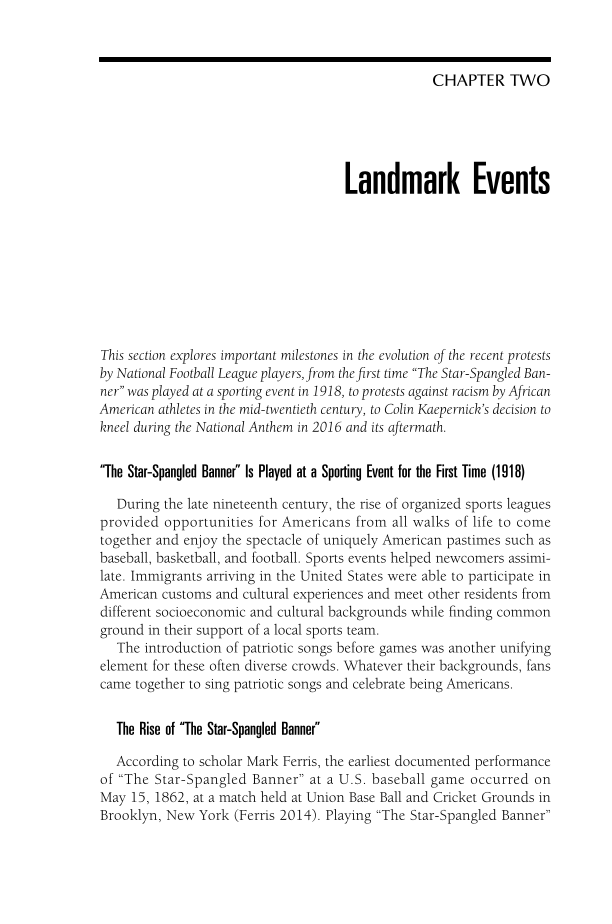CHAPTER TWO Landmark Events This section explores important milestones in the evolution of the recent protests by National Football League players, from the first time “The Star-Spangled Ban- ner” was played at a sporting event in 1918, to protests against racism by African American athletes in the mid-twentieth century, to Colin Kaepernick’s decision to kneel during the National Anthem in 2016 and its aftermath. “The Star-Spangled Banner” Is Played at a Sporting Event for the First Time (1918) During the late nineteenth century, the rise of organized sports leagues provided opportunities for Americans from all walks of life to come together and enjoy the spectacle of uniquely American pastimes such as baseball, basketball, and football. Sports events helped newcomers assimi- late. Immigrants arriving in the United States were able to participate in American customs and cultural experiences and meet other residents from different socioeconomic and cultural backgrounds while finding common ground in their support of a local sports team. The introduction of patriotic songs before games was another unifying element for these often diverse crowds. Whatever their backgrounds, fans came together to sing patriotic songs and celebrate being Americans. The Rise of “The Star-Spangled Banner” According to scholar Mark Ferris, the earliest documented performance of “The Star-Spangled Banner” at a U.S. baseball game occurred on May 15, 1862, at a match held at Union Base Ball and Cricket Grounds in Brooklyn, New York (Ferris 2014). Playing “The Star-Spangled Banner”
Document Details My Account Print multiple pages
Print
You have printed 0 times in the last 24 hours.
Your print count will reset on at .
You may print 0 more time(s) before then.
You may print a maximum of 0 pages at a time.

























































































































































